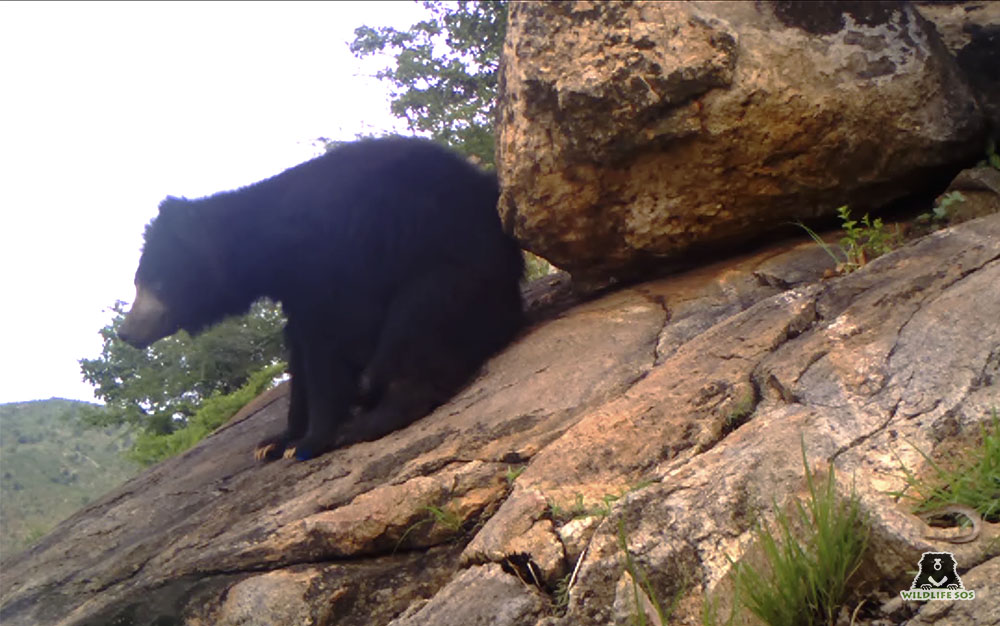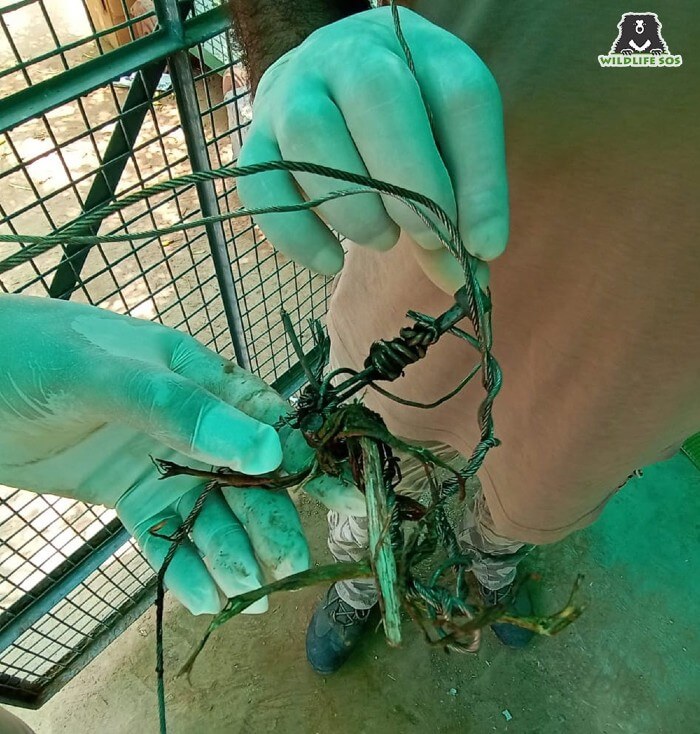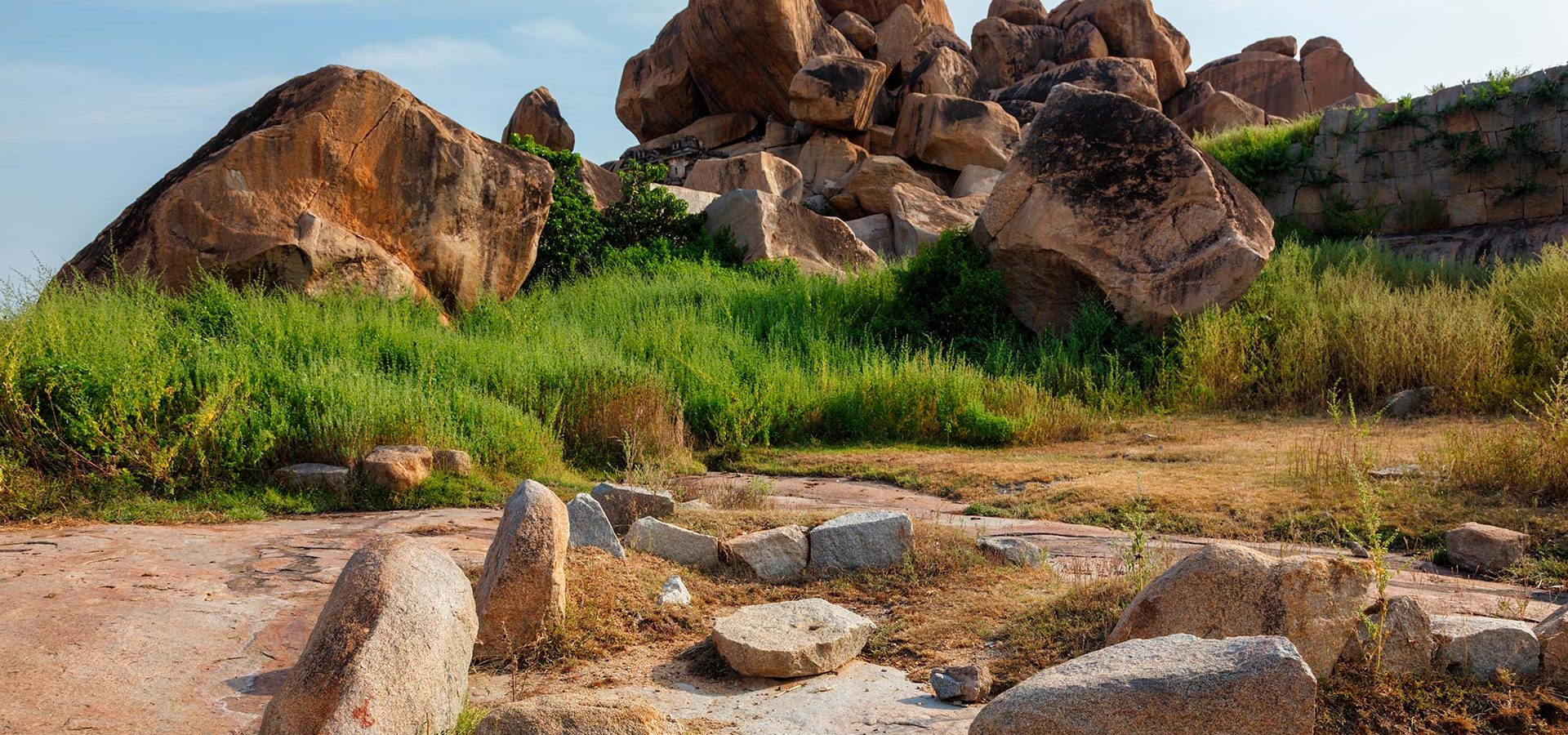Wildlife SOS has been rescuing sloth bears in the southern state of Karnataka since 2006. During this time Wildlife SOS has become very familiar with anthropogenic risks to the species, also known as the unintentional influence of human beings on nature. Unfortunately, sloth bears fall victim to several anthropogenic hazards, including snares, small crude explosive devices, open wells, roads, gunshots, barbed wire, and mob attacks. Snares are most often set to capture wild boar and Indian hare for ‘bush meat’. Sloth bears and other animals are often an unintended victim of these traps. Small explosive devices are hidden in food and explode when bitten into. Like snares they are set for bush meat, and again sloth bears are frequently casualties of these devices. Open wells, made for humans to have access to water, are also an unintended threat to sloth bears. Many fall into them and them resulting in death or serious injury as well.

Wildlife SOS collected data on 20 snare incidents, 8 crude explosive device incidents, 7 roadkill incidents, 5 open well incidents, 2 gunshot attacks, 1 barbed wire incident, and 1 mob attack. The data was collected, analyzed and published in the peer reviewed journal Ursus. The purpose of this effort was two-fold. First to draw attention to the issue in the hopes that action could be taken to mitigate these threats to sloth bears. And second, that the analysis of the data would be informative in understanding sloth bears in their natural habitat and be helpful in finding ways to help conserve the species.
Wildlife SOS discovered that female sloth bears fell victim to anthropogenic risks more often than did males (68% vs. 32%). Additionally, and disturbingly, 23% of the females had cubs or were pregnant. The reason for this may be related to sloth bear maternal denning tendencies in eastern Karnataka.

Wildlife SOS has documented that in this part of the state maternal dens are often located near forest edges where protected areas border agricultural areas (a manuscript documenting these findings will be published soon). The penchant for mother bears, and pregnant bears, to den near the forest edges may make them more susceptible to the anthropogenic risks that often occur just outside of protected areas.
Based on the research and analysis, Wildlife SOS has made several recommendations on how to mitigate these problems. These include making stiffer penalties for the use of snares and crude explosive devices, putting lips on all open wells, and working with road agencies and forest departments to construct additional wildlife crossings.
Wildlife SOS is grateful to our supporters for making it possible to evaluate these wildlife issues so we can better understand the problem and advise on better conservation strategies.





